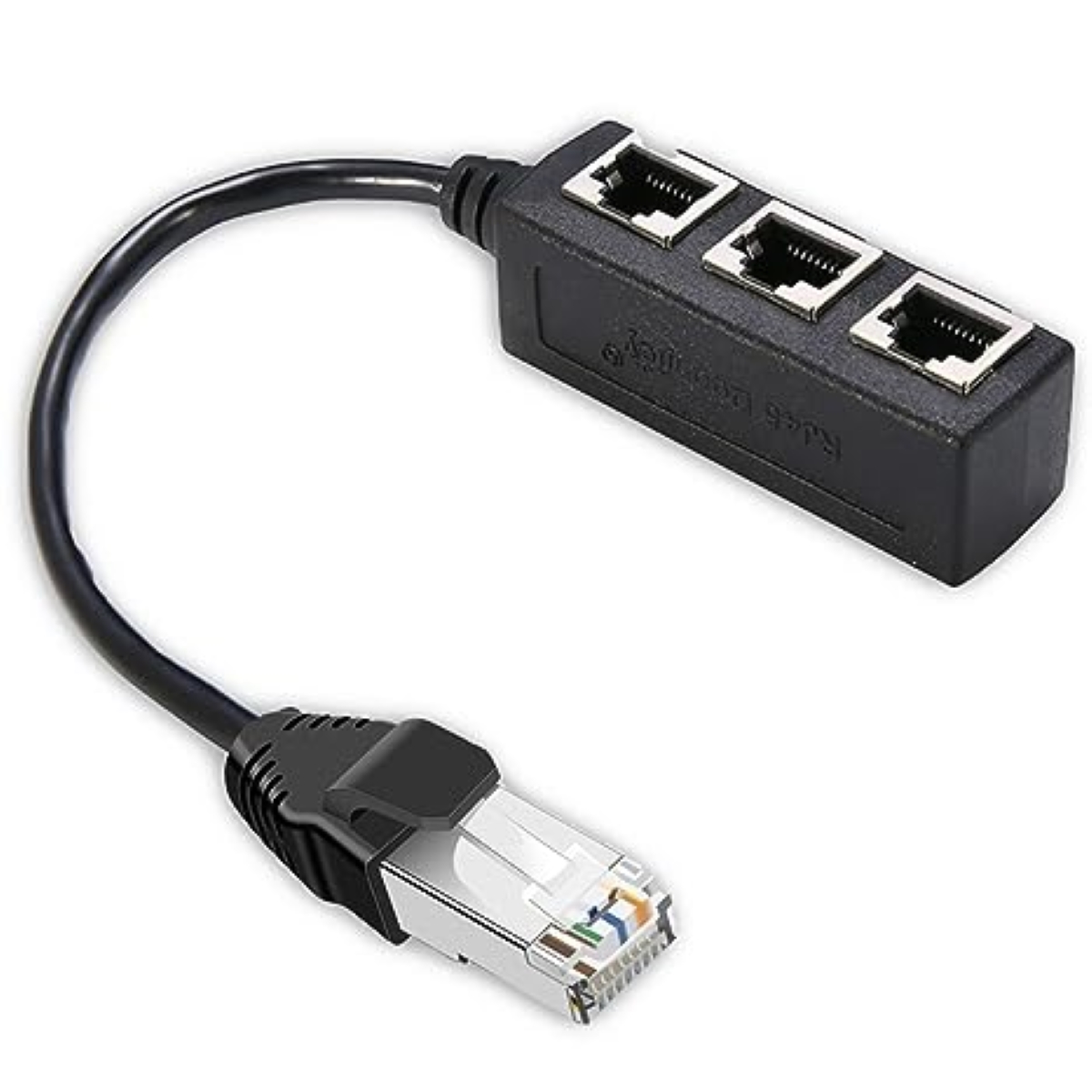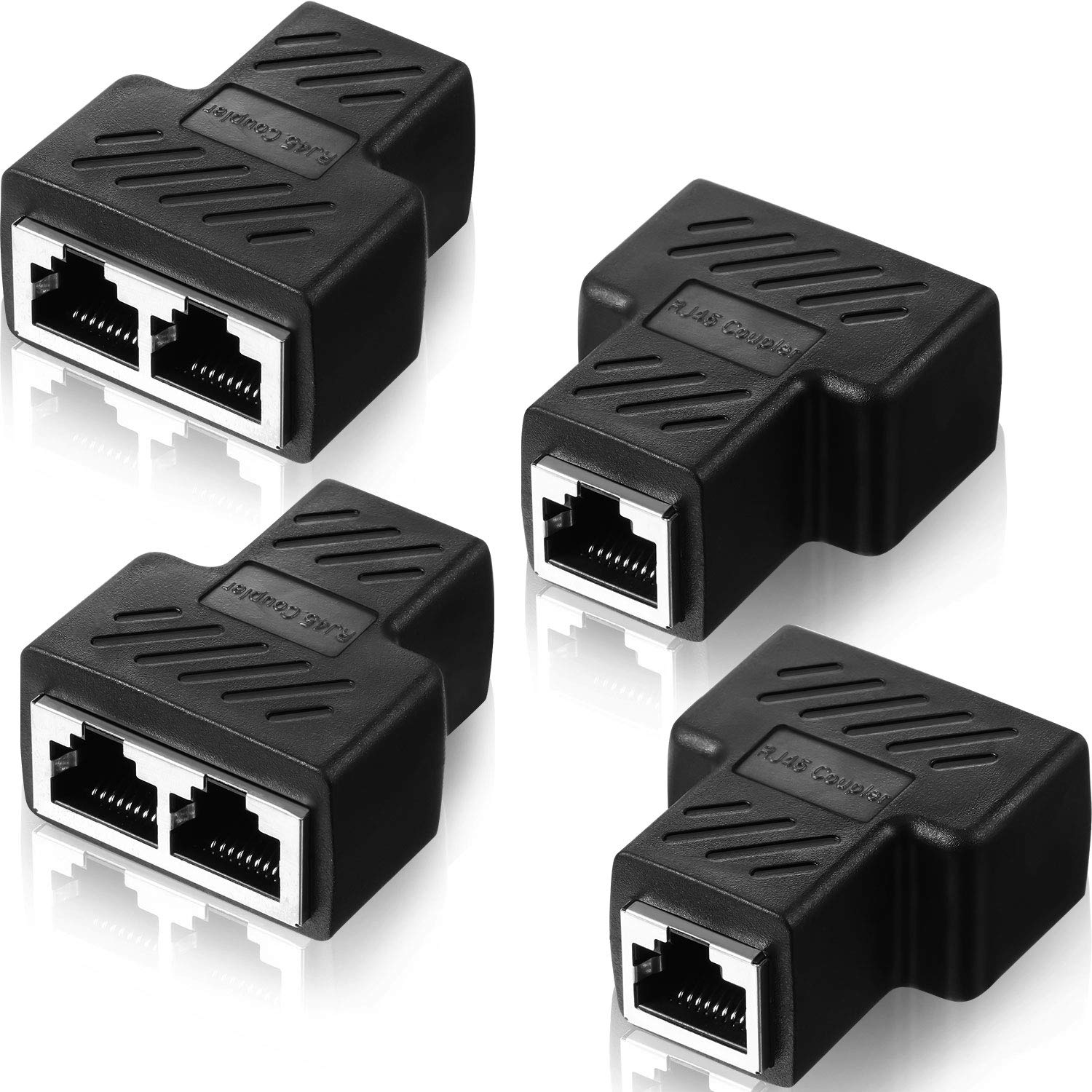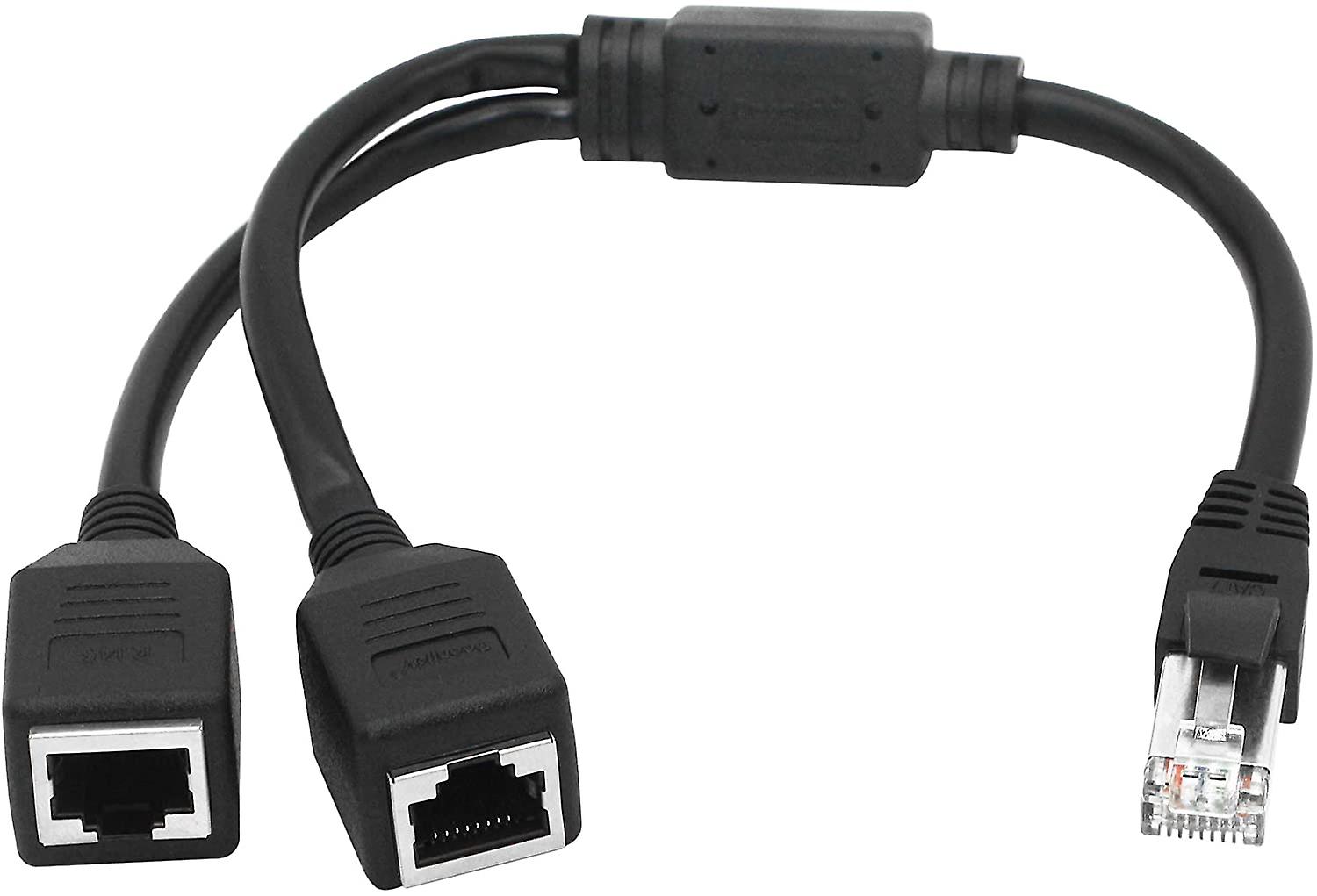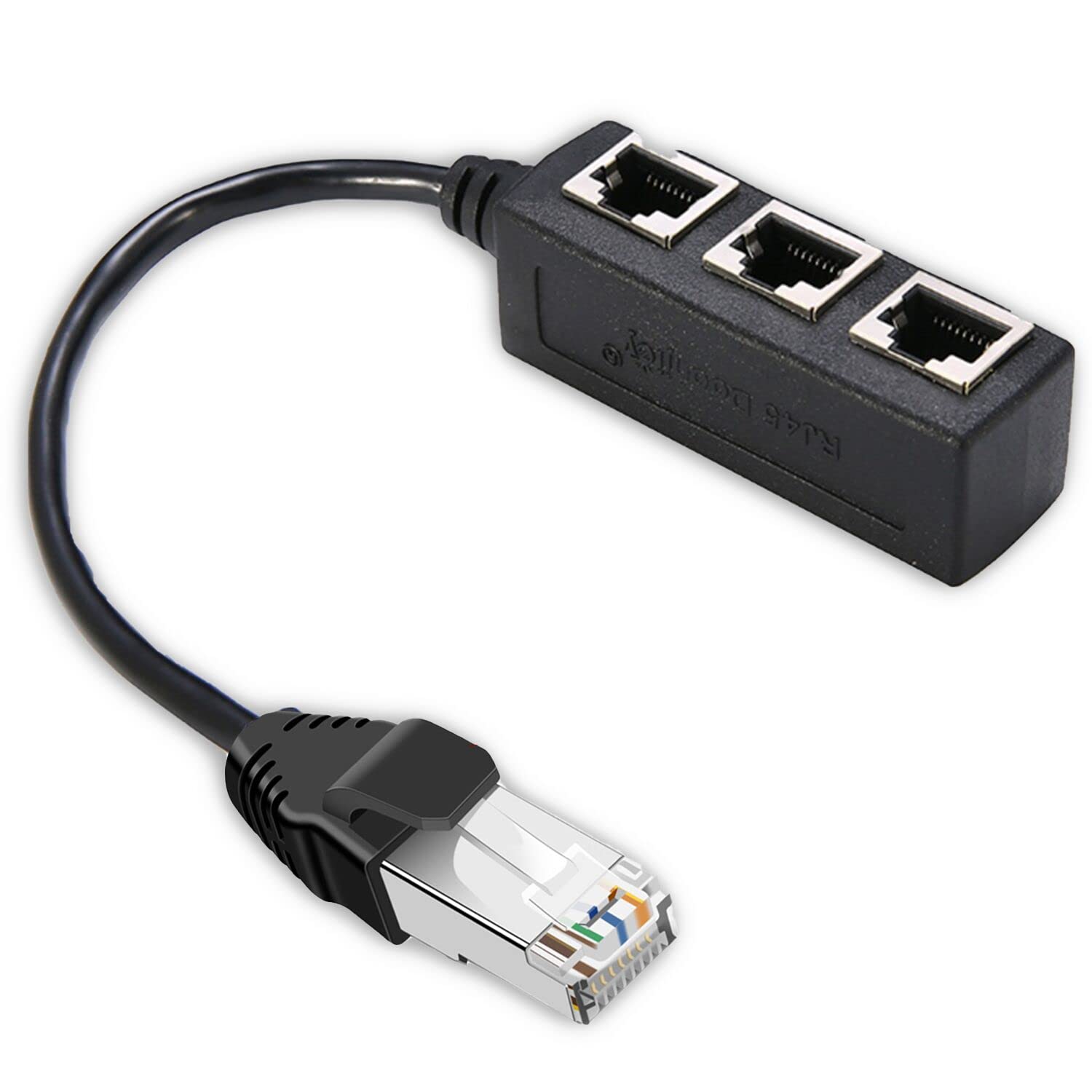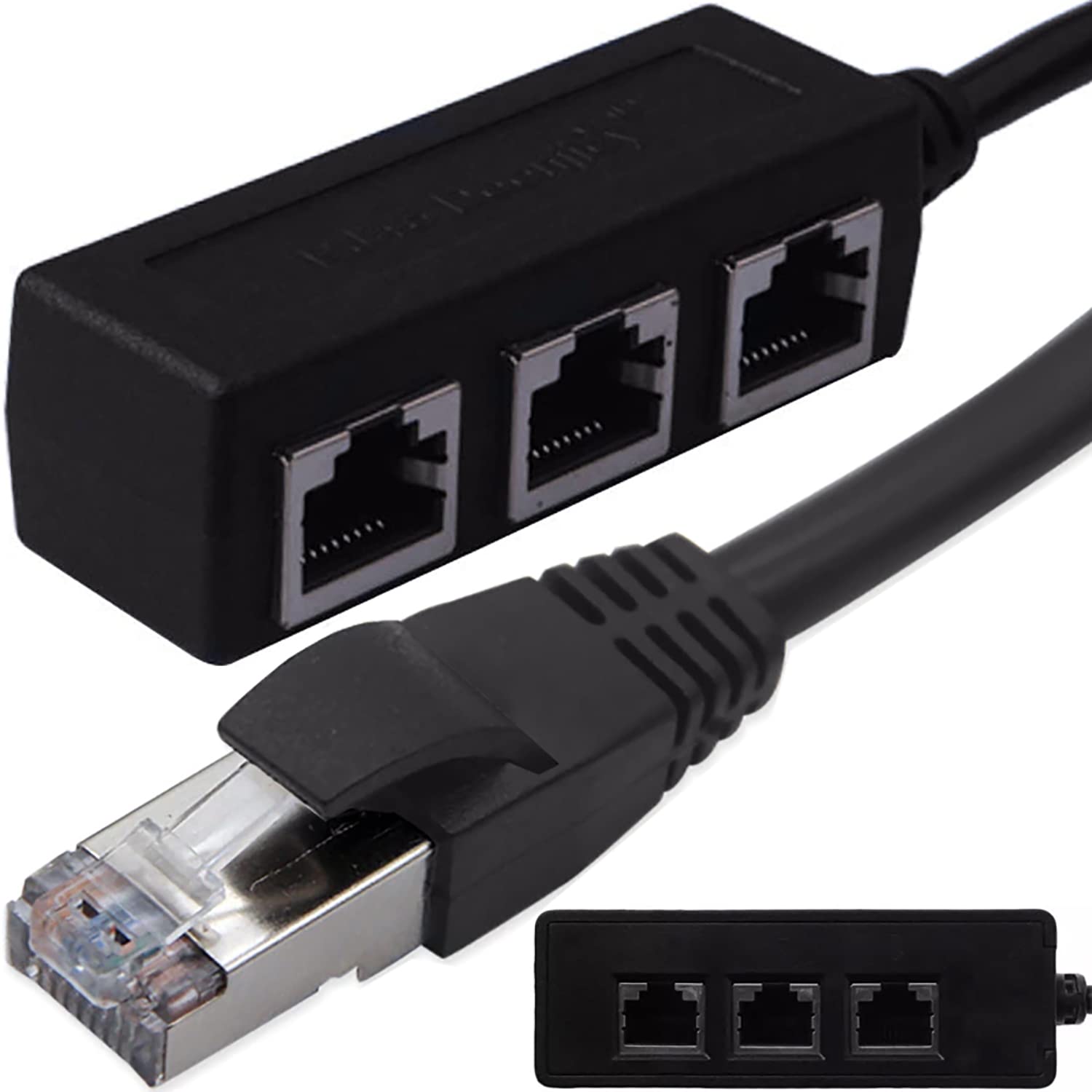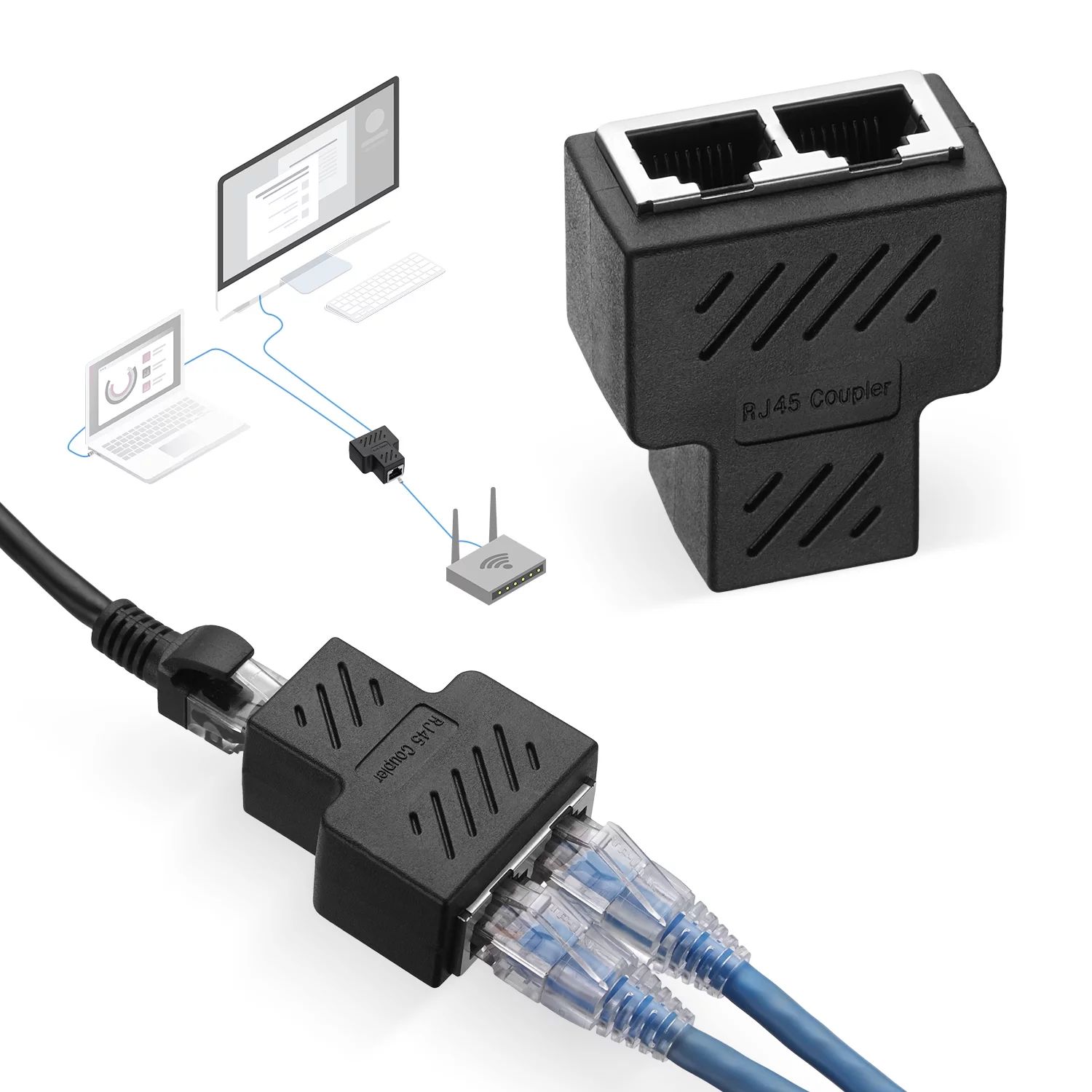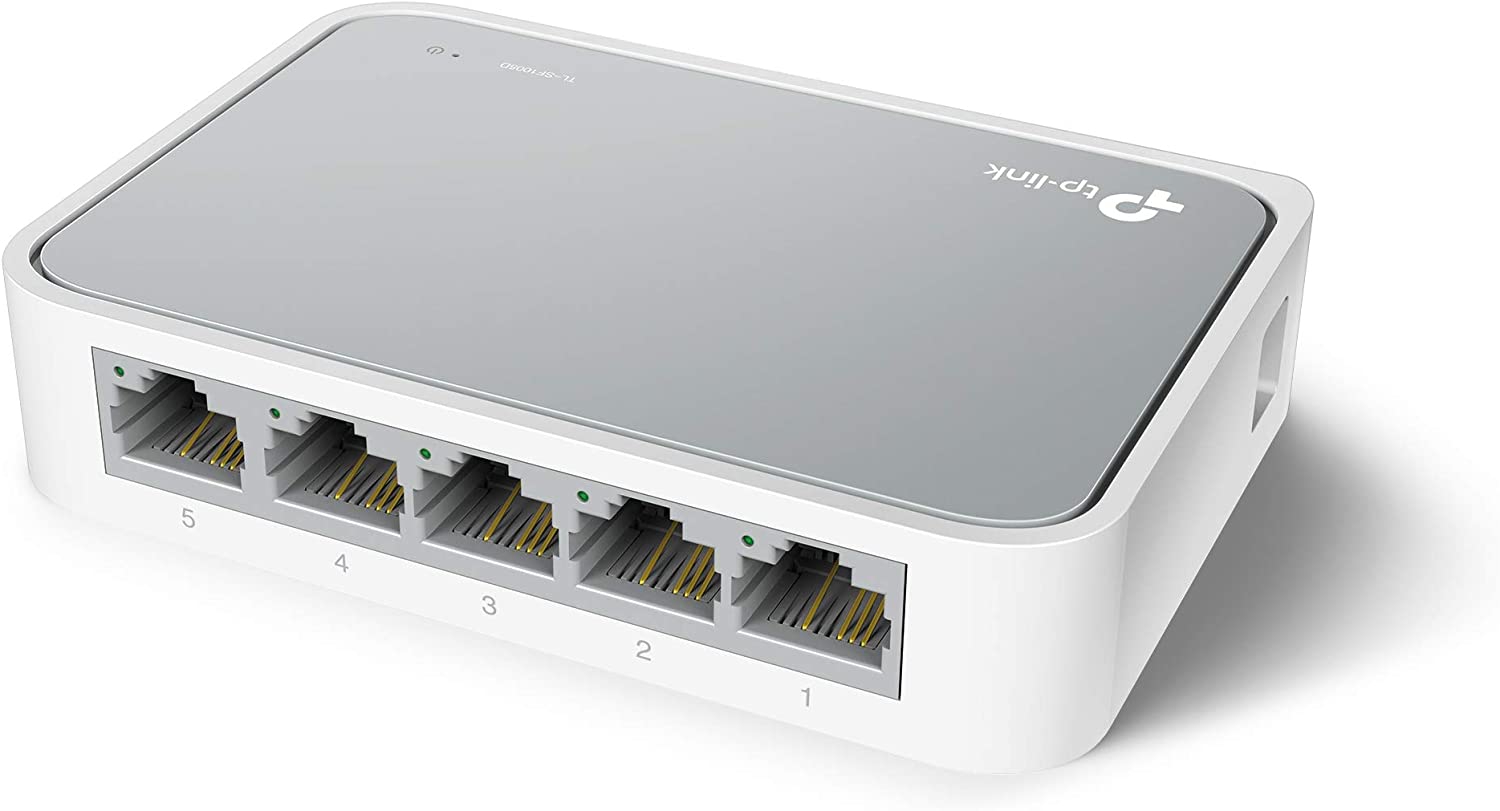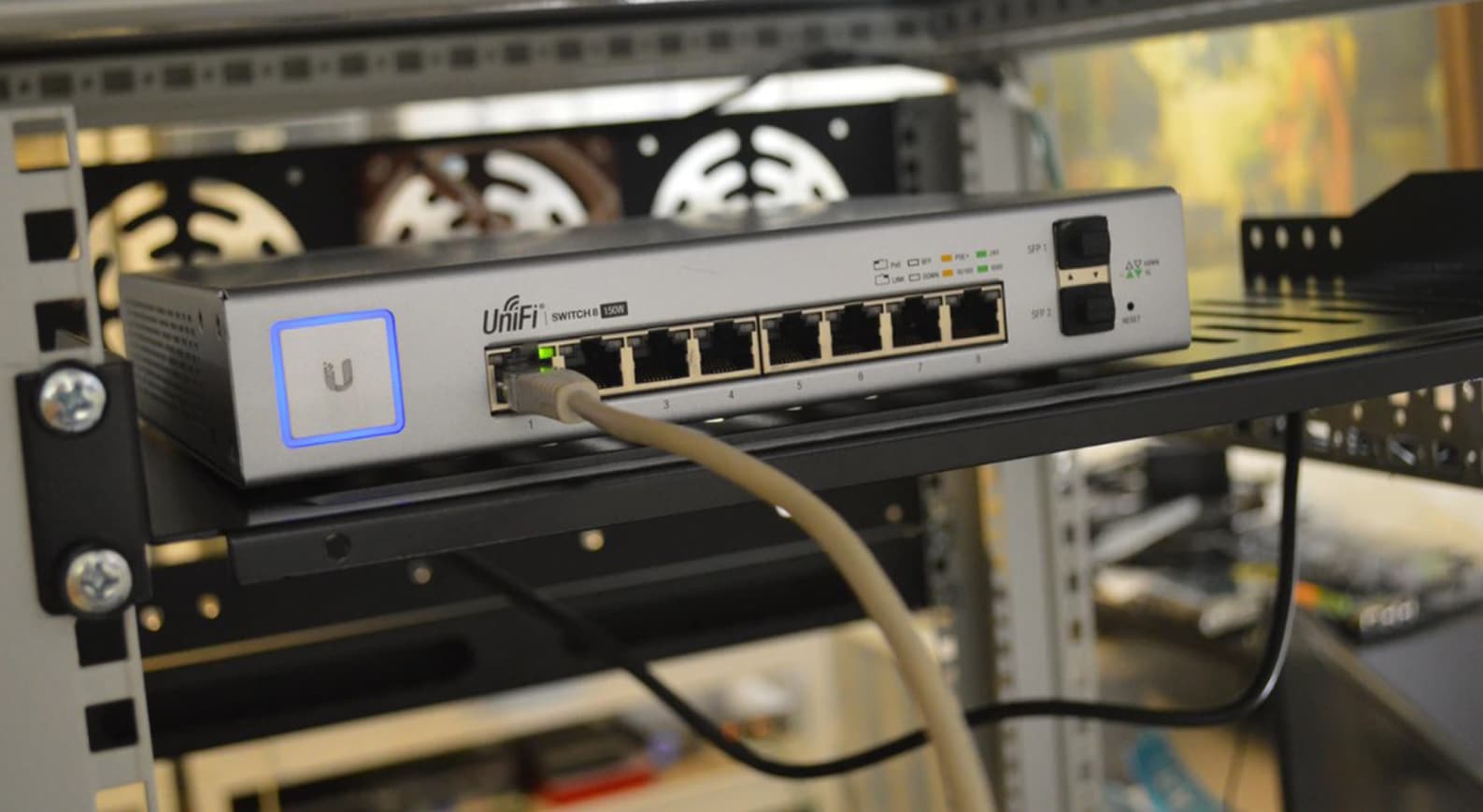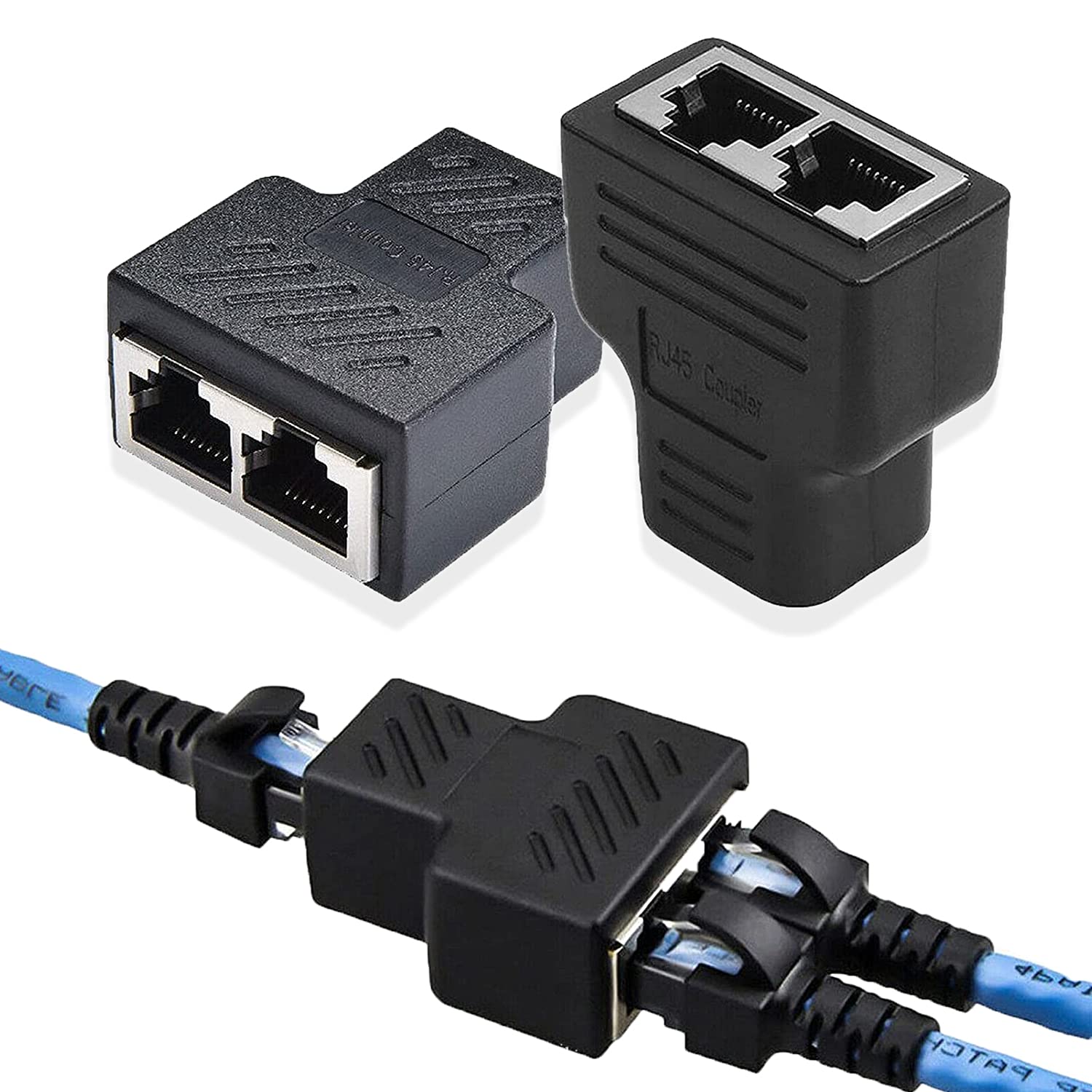What is an Ethernet Splitter?
An Ethernet splitter is a networking device that allows multiple devices to share a single Ethernet cable connection. It is primarily used to extend the number of available ports on a network router or switch. With an Ethernet splitter, you can connect multiple devices, such as computers, gaming consoles, printers, and smart TVs, to your home or office network without the need for additional routers or switches.
The splitter acts as a connector, enabling multiple devices to connect to a single Ethernet cable. It essentially divides the Ethernet signal into multiple paths, allowing each connected device to independently send and receive data packets. This eliminates the need for running multiple cables from the central network hub to each individual device, reducing clutter and simplifying network connectivity.
It is important to note that an Ethernet splitter is not the same as a network switch or a hub. While they serve similar purposes, splitters work by splitting an existing Ethernet connection, while switches and hubs create separate network segments. Splitters provide a simple and cost-effective solution for expanding the number of available ports on a network, especially in scenarios where running new cables may be impractical or expensive.
Ethernet splitters are compatible with both Ethernet Cat5e and Cat6 cables, which are commonly used for home and office networks. They are also backward compatible with older Ethernet standards, such as Cat5 and even Cat3, although performance may be limited in those cases.
Overall, an Ethernet splitter is a convenient device that allows you to easily connect multiple devices to a single Ethernet cable connection. It simplifies network setup and expansion, making it an ideal solution for homes, small offices, and other environments where multiple devices need to be connected to a network.
How Does an Ethernet Splitter Work?
An Ethernet splitter operates by dividing the Ethernet signal coming from a single port into two or more separate paths. It uses a process called passive splitting, which means that it does not require additional power or active components to split the signal. The splitter simply separates the transmit (Tx) and receive (Rx) signals of the incoming Ethernet connection and sends them to the respective devices connected to its ports.
When a data packet is transmitted over the Ethernet cable, the splitter ensures that it reaches the intended device. It does this by utilizing a two-pronged approach:
- Signal Separation: The splitter splits the incoming signal into separate transmit and receive paths. The transmit signal is sent to the devices connected to the “transmit” ports of the splitter, while the receive signal is sent to the devices connected to the “receive” ports. This ensures that the data packets are directed to the correct devices for sending and receiving information.
- Signal Preservation: The splitter maintains the integrity of the signal by preventing interference or disruption between the devices connected to its ports. It achieves this by utilizing impedance matching and signal isolation techniques that minimize signal degradation and ensure optimal transmission quality.
It’s important to note that Ethernet splitters work based on a half-duplex communication method, meaning that devices connected to the splitter cannot transmit and receive data simultaneously. However, in most cases, this limitation does not hinder the overall performance of the connected devices, as the data transfer speeds provided by Ethernet connections are typically more than sufficient for most applications.
To ensure optimal performance when using an Ethernet splitter, it is essential to consider the distance between the splitter and the connected devices. The maximum recommended distance between the splitter and the devices should comply with the Ethernet cable standard being used (e.g., Cat5e, Cat6), typically up to 100 meters.
In summary, an Ethernet splitter works by dividing the incoming Ethernet signal into separate transmit and receive paths, enabling multiple devices to share a single Ethernet cable connection. It does this by passively splitting and redirecting the signals to the devices connected to its ports. By understanding how an Ethernet splitter functions, you can effectively expand your network connectivity without the need for additional routers or switches.
Understanding the Basic Functionality of an Ethernet Splitter
An Ethernet splitter is a simple yet effective device that serves as a central hub for connecting multiple devices to a single Ethernet cable. While it may seem similar to a network switch or hub, it has some distinct functionality and limitations.
The basic functionality of an Ethernet splitter is to divide the incoming Ethernet signal into separate paths, allowing multiple devices to connect to a single Ethernet cable connection. It accomplishes this through passive splitting, which means it does not require an external power source or active components to operate. This makes installation and setup hassle-free.
When a device sends data over the network, the Ethernet splitter determines which connected device should receive the data. It accomplishes this by utilizing the Media Access Control (MAC) addresses of the devices. Each device that is connected to the splitter has a unique MAC address, which acts as a unique identifier for data transmission. The splitter ensures that data packets are directed to the appropriate device based on their MAC addresses, allowing for efficient data flow.
However, it’s important to note that an Ethernet splitter operates in a half-duplex mode. This means that connected devices cannot transmit and receive data simultaneously. Instead, they take turns sending and receiving data packets, which may result in slightly slower data transfer speeds compared to full-duplex mode. Nevertheless, for most home and small office setups, the impact on performance is negligible.
One of the key advantages of an Ethernet splitter is its simplicity. Unlike a network switch, an Ethernet splitter does not require any configuration or management. It is a plug-and-play device that instantly expands the number of available Ethernet ports. This makes it an ideal solution for quickly connecting multiple devices without the need for complex network setups.
However, it’s important to be aware of the limitations of an Ethernet splitter. Firstly, it does not provide network isolation between the connected devices. This means that all devices connected to the splitter are part of the same network segment and can potentially access each other’s data. Secondly, the overall bandwidth is shared among the devices connected to the splitter, which may impact data transfer speeds, particularly if multiple devices are simultaneously transmitting or receiving large amounts of data.
In summary, an Ethernet splitter functions by dividing the incoming Ethernet signal into separate paths based on device MAC addresses. It enables multiple devices to share a single Ethernet cable connection without the need for complex configuration. While it operates in a half-duplex mode and has some limitations, an Ethernet splitter provides a convenient and cost-effective solution for expanding network connectivity in home and small office environments.
Types of Ethernet Splitters
Ethernet splitters come in different types, each designed to meet specific networking requirements. Understanding the different types can help you choose the most suitable splitter for your needs. Let’s explore some of the common types of Ethernet splitters:
- 2-Way Ethernet Splitter: As the name suggests, a 2-way Ethernet splitter divides a single Ethernet connection into two separate paths. It enables you to connect two devices, such as a computer and a gaming console, to a single Ethernet cable. This type of splitter is commonly used in home networking scenarios.
- 3-Way Ethernet Splitter: A 3-way Ethernet splitter expands on the functionality of a 2-way splitter by allowing three devices to be connected to a single Ethernet cable. It provides an additional port for connecting an extra device, such as a printer or a smart TV, alongside two other devices. This type of splitter is useful in small office environments or home setups with multiple devices.
- 5-Way Ethernet Splitter: A 5-way Ethernet splitter further increases the number of available ports, allowing up to five devices to share a single Ethernet cable connection. This type of splitter is beneficial in situations where you need to connect multiple devices in a small office or home entertainment setup.
- PoE Ethernet Splitter: Power over Ethernet (PoE) splitters are specialized devices that not only split the Ethernet signal but also provide power to devices that support PoE. These splitters are commonly used to power devices like IP cameras, wireless access points, and VoIP phones, simplifying installation and reducing the need for additional power outlets.
- Gigabit Ethernet Splitter: Gigabit Ethernet splitters are designed to support high-speed data transfer rates of up to 1000 Mbps. They are backward compatible with Ethernet standards such as 10/100 Mbps, making them suitable for both older and modern network setups. These splitters provide a reliable solution for bandwidth-intensive applications or networks where speed is of the essence.
It is important to note that Ethernet splitters are not interchangeable with Ethernet switches. While splitters split the Ethernet signal into separate paths, switches create individual network segments, allowing for simultaneous data transmission between multiple connected devices. Additionally, Ethernet splitters are typically used for smaller networks with a limited number of devices, while switches are preferred for larger networks where more extensive connectivity options are required.
When choosing an Ethernet splitter, consider the number of devices you need to connect, the required data transfer speeds, and any specific requirements such as PoE support. Evaluating these factors will help you select the most appropriate splitter for your networking needs.
Advantages and Disadvantages of Using an Ethernet Splitter
Using an Ethernet splitter offers several advantages and disadvantages that you should consider before incorporating it into your network setup. Let’s explore the advantages and disadvantages of using an Ethernet splitter:
Advantages:
- Cost-effectiveness: Ethernet splitters are a cost-effective solution for expanding network connectivity. They eliminate the need for additional routers or switches, which can be more expensive.
- Simplicity: Ethernet splitters are easy to install and use. They are plug-and-play devices that require no configuration or management, making them suitable for novice users.
- Space-saving: By allowing multiple devices to connect to a single Ethernet cable, splitters reduce cable clutter and the need for running multiple cables to each device.
- Flexibility: Splitters can be used in various settings, such as homes, small offices, and temporary installations, providing flexibility in network expansion without significant infrastructure changes.
- Compatibility: Ethernet splitters are compatible with different Ethernet standards, ensuring compatibility with existing network infrastructure.
Disadvantages:
- Half-duplex communication: Ethernet splitters operate in a half-duplex mode, meaning that connected devices cannot transmit and receive data simultaneously. This may result in slightly slower data transfer speeds compared to full-duplex communication.
- Shared bandwidth: The total available bandwidth is shared among the devices connected to the splitter. If multiple devices are actively transmitting or receiving data simultaneously, it may affect overall network performance.
- No network isolation: Connected devices share the same network segment, which means they can potentially access each other’s data. This lack of network isolation may not be suitable for scenarios where stricter data security is required.
- Limited port availability: The number of available ports on an Ethernet splitter is limited based on its type. If you need to connect a large number of devices, a splitter may not provide enough ports, requiring additional splitters or alternative networking solutions.
- Signal degradation: Depending on the quality of the splitter and the length of the Ethernet cable, there may be some signal degradation over longer distances, which can impact data transmission reliability.
Considering the advantages and disadvantages, it is important to evaluate your specific networking requirements and the limitations of Ethernet splitters before deciding to use them in your network setup. While they offer cost-effectiveness and simplicity, they may not be suitable for all scenarios, especially if you require high bandwidth, network isolation, or extensive port availability.
Step-by-Step Installation Guide for Ethernet Splitters
Installing an Ethernet splitter is a straightforward process that can be done by following a few simple steps. To help you get started, here is a step-by-step installation guide for Ethernet splitters:
- Step 1: Gather the necessary materials: Make sure you have an Ethernet splitter, Ethernet cables, and the devices you want to connect to the splitter. Ensure that the length of the Ethernet cables is sufficient to reach the devices from the splitter’s location.
- Step 2: Identify the incoming Ethernet connection: Locate the Ethernet cable that is connected to your network router or switch. This will be the cable that supplies the internet connection to your home or office.
- Step 3: Connect the splitter: Take the incoming Ethernet cable and connect it to the “Input” port on the Ethernet splitter. Ensure that it is securely plugged in.
- Step 4: Connect the devices: Take additional Ethernet cables and connect each device you want to connect to the splitter. Plug one end of each cable into the “Output” ports on the splitter and the other end into the Ethernet ports on the respective devices.
- Step 5: Power on the devices: Power on your network devices, such as computers, gaming consoles, or printers, that are connected to the splitter. They should recognize the network connection and establish a connection to the internet.
- Step 6: Test the connection: Verify that each device connected to the splitter is successfully accessing the internet. Open web browsers or network-dependent applications on each device to ensure that the connection is working correctly.
- Step 7: Troubleshoot, if necessary: If any device is not able to establish a connection, double-check the cable connections and ensure they are securely plugged in. You may also want to restart the devices or troubleshoot any network issues that may be affecting the connection.
By following these step-by-step instructions, you should be able to successfully install an Ethernet splitter and connect multiple devices to a single Ethernet cable connection. Remember to consider the distance limitations of Ethernet cables and purchase cables of sufficient length to reach your devices comfortably.
Common Mistakes to Avoid When Using an Ethernet Splitter
While using an Ethernet splitter can be a convenient solution for expanding network connectivity, there are certain common mistakes that should be avoided to ensure optimal performance and reliability. Here are some common mistakes to avoid when using an Ethernet splitter:
- Using incorrect cables: Ensure that you are using the correct type of Ethernet cables. Using low-quality or damaged cables can result in poor signal quality or disrupted connections.
- Exceeding cable length limitations: Ethernet cables have maximum distance limitations. Make sure that the length of the cables connecting your devices does not exceed the recommended maximum length for the Ethernet standard being used (e.g., Cat5e, Cat6).
- Not securing cable connections: Ensure that all cable connections to the Ethernet splitter and devices are secure. Loose or unplugged cables can result in intermittent or unreliable connections.
- Plugging devices into incorrect ports: Pay attention to the labeling on the ports of the Ethernet splitter. Make sure you are connecting devices to the appropriate transmit (Tx) or receive (Rx) ports to ensure proper data flow.
- Overloading the splitter: Every Ethernet splitter has a maximum number of ports and a maximum supported data transfer rate. Do not exceed these limits, as it can lead to reduced performance or complete network failure.
- Insufficient bandwidth for high-demand applications: If you plan to use bandwidth-intensive applications or require high-speed data transfer, consider using a network switch instead of an Ethernet splitter. Splitters may not provide enough available bandwidth for these requirements.
- Not considering network security: Ethernet splitters do not provide network isolation between connected devices. If you require network segmentation or enhanced data security, consider using a network switch or other networking solutions.
- Failure to troubleshoot connectivity issues: If devices are not establishing a connection, take the time to troubleshoot the issue. Check cable connections, restart devices, or diagnose any network-related problems that may be affecting the connection.
By avoiding these common mistakes, you can ensure a smoother and more efficient networking experience when using an Ethernet splitter. Take the time to double-check your connections, use appropriate cables, and consider your network requirements to achieve the best results.
Frequently Asked Questions about Ethernet Splitters
Here are answers to some commonly asked questions about Ethernet splitters:
Q: Can I use an Ethernet splitter to increase the number of ports on my router?
A: No, Ethernet splitters are not designed to expand the number of ports on a router. They are used to share a single Ethernet cable connection among multiple devices. If you need to add more ports to your router, it’s recommended to use a network switch instead.
Q: Can I use an Ethernet splitter to connect devices in different rooms?
A: Yes, you can use an Ethernet splitter to connect devices in different rooms. However, you need to ensure that the Ethernet cable connected to the splitter is long enough to reach the desired location. The maximum cable length for reliable data transmission may vary depending on the Ethernet standard being used.
Q: Will using an Ethernet splitter affect my internet speed?
A: Using an Ethernet splitter can slightly affect internet speed due to the shared bandwidth among the connected devices. However, for most home or small office networks, the impact on speed is minimal. If you require high-speed data transfer or have bandwidth-intensive applications, a network switch may be a better option.
Q: Can I use an Ethernet splitter with a Power over Ethernet (PoE) device?
A: Yes, there are Ethernet splitters specifically designed to work with PoE devices. These splitters not only split the Ethernet connection but also provide power to PoE-enabled devices such as IP cameras or wireless access points. Make sure to use a PoE-compatible splitter if you intend to power PoE devices.
Q: Do Ethernet splitters require any configuration?
A: No, Ethernet splitters are typically plug-and-play devices that do not require any configuration or management. Once properly connected, the devices should establish a network connection without any additional setup.
Q: Can I use multiple Ethernet splitters in a network setup?
A: Yes, you can use multiple Ethernet splitters in a network setup to connect more devices. However, it’s important to consider the limitations of each splitter, such as the number of available ports and maximum supported data transfer rates, to ensure optimal performance.
These are just a few frequently asked questions about Ethernet splitters. If you have more specific inquiries or concerns, it’s recommended to consult the manufacturer’s documentation or seek assistance from a technical expert.
Conclusion
Ethernet splitters provide a simple and cost-effective solution for expanding network connectivity by allowing multiple devices to share a single Ethernet cable connection. They offer several advantages such as cost-effectiveness, simplicity, space-saving, flexibility, and compatibility with various Ethernet standards. By understanding how Ethernet splitters work and considering their limitations, you can make informed decisions about incorporating them into your network setup.
It is important to follow proper installation procedures and avoid common mistakes when using Ethernet splitters. This includes using the correct Ethernet cables, securing cable connections, adhering to cable length limitations, and troubleshooting any connectivity issues that may arise. It’s worth noting that if you require higher bandwidth, network isolation, or extensive port availability, alternative networking solutions may be more suitable, such as using a network switch.
Overall, Ethernet splitters provide a convenient and efficient way to expand network connectivity, making them ideal for home, small office, and temporary installations. By carefully assessing your networking needs and taking into account the advantages, disadvantages, and installation considerations of Ethernet splitters, you can successfully enhance your network connectivity with ease.







